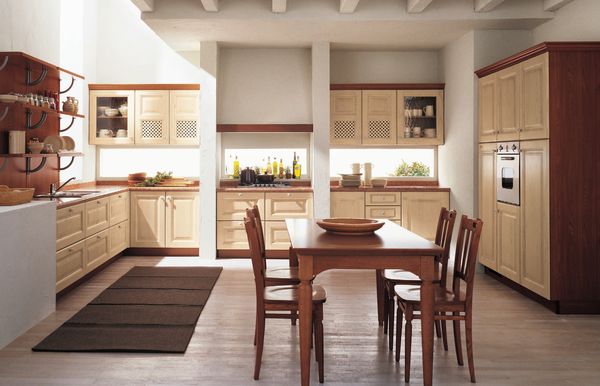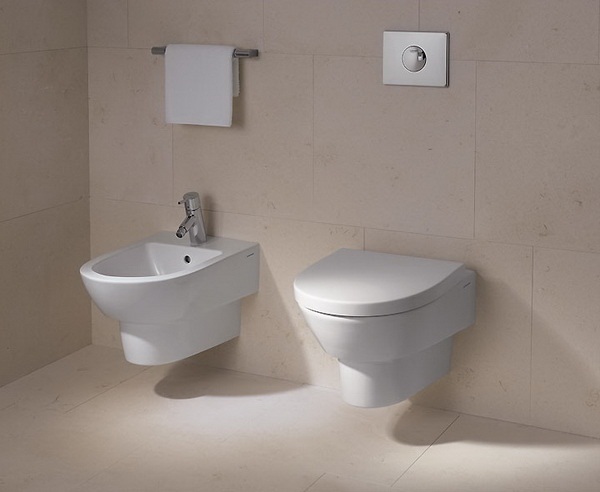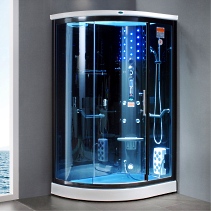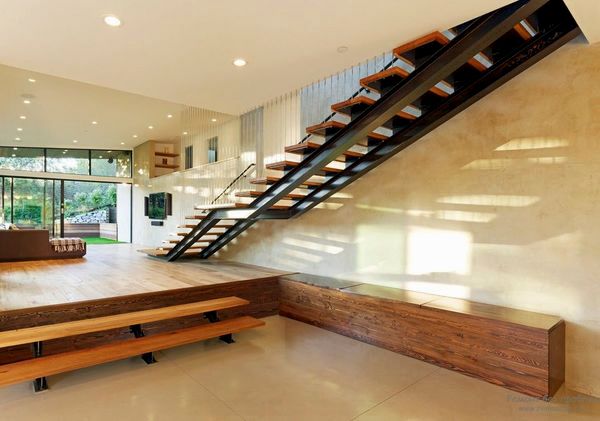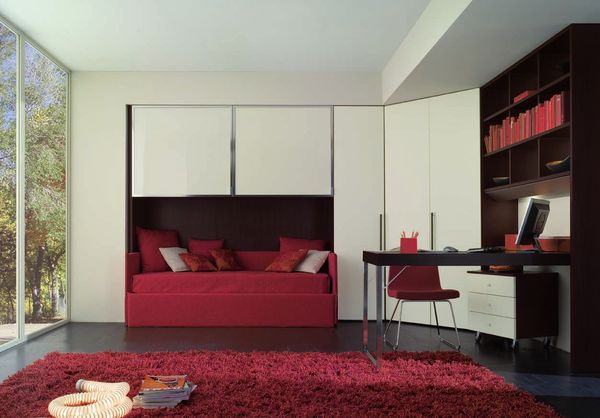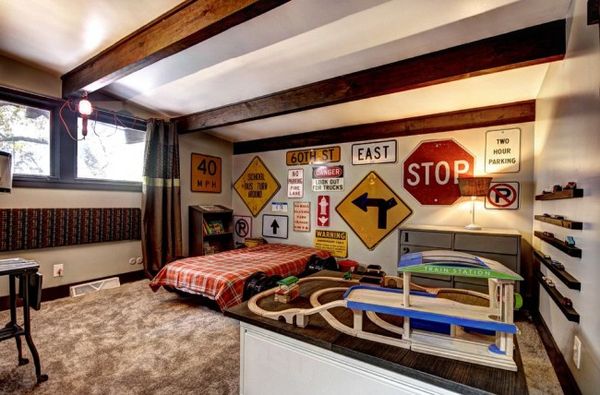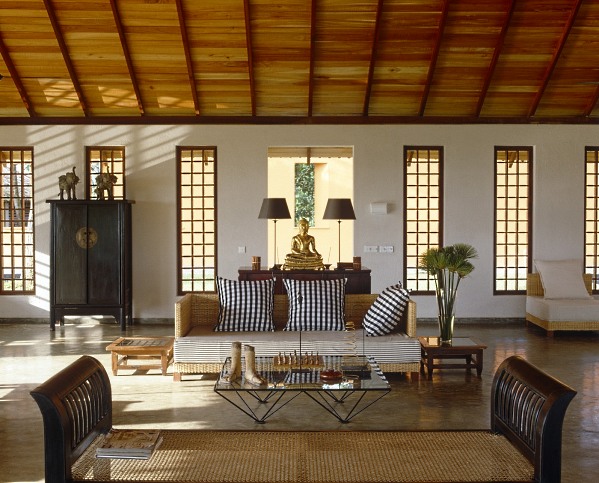Tile Gauge and Problems of Various CalibersConstruction markets are overwhelmed with the ceramic tiles of hundreds of domestic and foreign companies and firms. There are the international norms and standards on almost all industrial products, including tiles. Why will, then if not enough tiles you go and take the same, the same size and the same brand, but it has appeared that the junctures do not match? Or worse, taken a few boxes of identical tiles, but the tiles from different boxes are not normally joined to each other? Reasons for DiscrepancyWhen soaking with water at the factory, the clay swells, and during the curing (burning) it is compressed. Ceramic, not to be a piece of clay or raw-brick, need a firing in which the tile are reduced significantly. That is the main reason of sizes mismatch. Other causes only affect the parameters of these dimensions. Here they are: • The heterogeneity of the composition. The clay quarries on the Earth are a great variety. Therefore, the raw materials delivered even for a single plant or factory from the different deposits. Each several clay has some individual properties. How these properties will affect the final result, God only knows. What Is It − Caliber of Tiles?For example, after firing the tile with the expected size of 10 inches has a size of 9.7 inches, or 10 inches, if the excess clay had put in the form. Now, the smallest size and the largest one of the tiles are taken out of the party. They can vary in size quite considerably, sometimes up to 0.4 inches. The smallest size is only the first caliber; differing from it by 0.04 inches − the second, by 0.08 inches − the third and so on. However such a classification (on first, second...) is a choice of the manufacturer when he sorts; the consumer, not knowing the smallest size, the words "the fifth caliber" do not mean anything, only that it is not the nominal size of the tile. The buyer, if you take our example, more understandably so: 10 inches minus 0.16 inches or 10 inches plus 0.1 inches. And, at least, you can simply specify a specific size. Thus, a caliber is the actual size of the tiles. A serious manufacturer will be checking the dimensions with a laser; the tiles in boxes are sorted by caliber and this means that no one packs of tiles of different calibers will not be exit. In addition, the box will be marked by the tiles' real dimensions, or specified with the numeric caliber with a table showing what caliber and what size fits. On What Indications or Documents Can You Learn Caliber?
Information on the box is the source of knowledge about the tiles. In this picture, the caliber is specified even in two places. In general, the necessary information must be able to locate and read. What does this mean? Many of the tile's features you can learn from the text about it, others − from the icons. And try to guess that the marking color indicates the grade of the tiles: red − the first grade, blue is the second, green is the third. That "Beats" Caliber
Standards, Tolerances, Brands...We operate domestic, European and international standards, recommending certain sizes and calibers. It is recommending. No standard is not a mandatory rule or a setting for the manufacturer. For example, Germany, Spain and Italy are classifying the tiles according to European standards EN ISO, but each manufacturer controls the quality of the tiles individually. To the credit of Italy and Spain it should be noted that the requirements for the gauges, compared to European standards, are too high. Deviations from the nominal sizes of the tiles are much less than the recommended European. They are equal to 0.5 per cent. And China has long been not only known by its consumer goods. For example, the factory CIMIC so gauges their production that in the same room (in the photo) the tiles of different colors are quite compatible with each other, though, by definition, it is already a sign of a different caliber. By the way, China is a world leader in the production of tiles (about 2.1 billion yd2/year). Meanwhile, the price of Chinese products is three times less than Italian and Spanish (although in China there are other criteria of quality). As Manufacturer Is Correcting Situation with Gauges
Only here there is one nuance. Within the collection a single company the rectified tiles will always have the same gauge (caliber), but in the different collections from the different companies, even the rectified tiles can be of a different caliber. Whether Need Seam at Stacking Rectified Tiles?It seems to be geometrically evenly cut surfaces should ideally coincide with each other. It turns out that the seam is not needed. Nevertheless, the producers themselves are not advised to lay rectified tiles entirely without seam. And the designer advises seamless styling. What to do? Agree because the seamless laying is considered with the seam to 0.08 inches wide. They advise not to lay the tiles, completely without a seam right next to each other. The reasons are: - a layer of tiles can fall off from the wall even in the new house because a dry tile is already does not the shrinkage, and the wall with the glue gives, it can go a bundle; Little on PriceCalibration and rectification are two different methods to prepare the tiles for lying in the wall or on the floor. It is necessary to note some features in this foreshortening. For the convenience are always paid. The rectified tiles are easier and faster to lay, but the cost of it is somewhere on the quarter above the simple calibrated tiles. In addition the same caliber does not mean an absolute equality of the tiles, and two rectified tiles are not necessarily completely alike. The standards allow a variance in the sizes of rectified tiles of 0.06 inches at edge, which is normal because this seam is virtually invisible. Mentioned above, the Italian and the Spanish tiles, as calibrated and rectified, are always more expensive within one caliber and in general, the reasons for which are:
Importance of Correct CalibrationIf tiled one caliber, and with all the rules of stacking, it withstands up to about 30000 ton/yd2. The figure is impressive and so. Add that is about fifteen times more than the reinforced concrete. Or other feature: hardness according to the Mohs' scale the mat ceramic granite tiles comes to 8-9 points, while the natural granite − is one and a half times less. However again, with an improper installation and failure to comply with calibers, it can be easy cracked from the stress. More articles on the topic: - Cosmetic Repairs in Apartment (Hallway) - Brown Drapes in Interior – Selection of Photos (50 pieces) - Leather Tiles – Royal Style Era - Industrial Carpeting: All That Needs to Be Known to Buyer - How to Combine Colors in Interior - Ideas with Photos | |
|
| |
Ideas for Kitchen Design in Apartment (55 Photos)
Wall Hung Toilet
Shower Cabins
Ideas of Living Room Design. 45 Images in Photos Collection
Stairs − Everything You Need to Know!
Ideas for Home Offices with Photos
Children's Bedrooms for Boys - Selection of 45 Photos
Elegant Tropical Style Bedroom
Insulate Balcony and Loggia with Your Hands
Design Small Nursery (60 Photos)

 Yes almost nowhere. In the bill of lading the caliber is not specified, and in the other documents about the releasing tiles, in extreme cases, can be pointed to their nominal size. You can ask the seller in the store, he should inform about calibers. The idea is that he should do it with pleasure − and how else? He knows about it, but says nothing, since he has nobody asked him about it.
Yes almost nowhere. In the bill of lading the caliber is not specified, and in the other documents about the releasing tiles, in extreme cases, can be pointed to their nominal size. You can ask the seller in the store, he should inform about calibers. The idea is that he should do it with pleasure − and how else? He knows about it, but says nothing, since he has nobody asked him about it. 1. It is understood that "impact" of mixed tiles will arise the great difficulties during the placement. It will be difficult to compile them exactly with unequal in size: impossible to put them together with the same width and to execute straightness of the seams, to lay the design drawings, they just do not fit.
1. It is understood that "impact" of mixed tiles will arise the great difficulties during the placement. It will be difficult to compile them exactly with unequal in size: impossible to put them together with the same width and to execute straightness of the seams, to lay the design drawings, they just do not fit. The tiles are subjected to a rectification (lat. − rectus and facio). This is a mechanical treatment whereby strictly at a 90° angle the tile's side edges are cutting. This process is mechanized, used precision lathes. Naturally, they are cutting exclusively according to the template and all the tiles are of the same size after this procedure. It solves the problem of a single caliber in such way. The tiles, which is then going to rectify initially produced with the large sizes, so you can continue to cut them with a diamond saw.
The tiles are subjected to a rectification (lat. − rectus and facio). This is a mechanical treatment whereby strictly at a 90° angle the tile's side edges are cutting. This process is mechanized, used precision lathes. Naturally, they are cutting exclusively according to the template and all the tiles are of the same size after this procedure. It solves the problem of a single caliber in such way. The tiles, which is then going to rectify initially produced with the large sizes, so you can continue to cut them with a diamond saw.